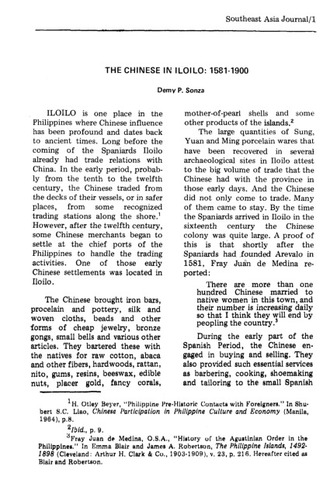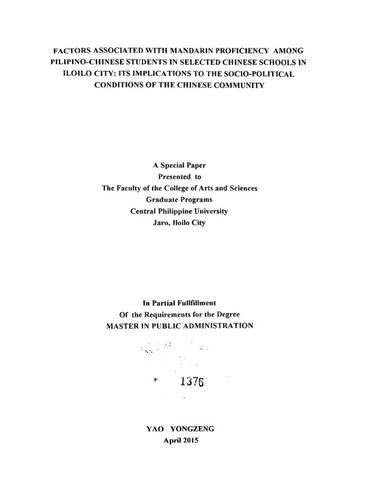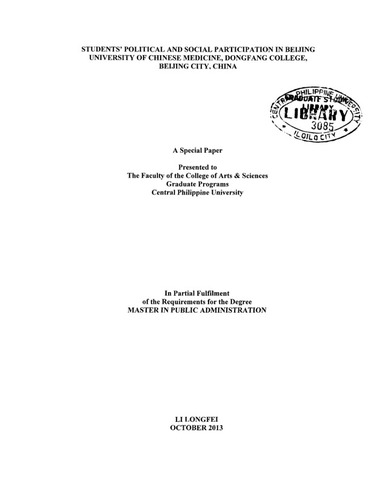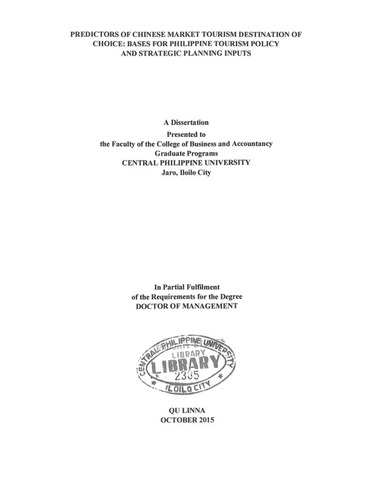Показать сокращенную информацию
The Chinese in Iloilo: 1581-1900
| dc.contributor.author | Sonza, Demy P. | |
| dc.coverage.spatial | Iloilo | en_US |
| dc.date.accessioned | 2023-04-19T01:49:10Z | |
| dc.date.available | 2023-04-19T01:49:10Z | |
| dc.date.issued | 1984 | |
| dc.identifier.issn | 00383600 | |
| dc.identifier.uri | https://hdl.handle.net/20.500.12852/2639 | |
| dc.description | Journal article | en_US |
| dc.description.abstract | ILOILO is one place in the Philippines where Chinese influence has been profound and dates back to ancient times. Long before the coming of the Spaniards Iloilo already had trade relations with China. In the early period, probably from the tenth to the twelfth century, the Chinese traded from the decks of their vessels, or in safer places, from some recognized trading stations along the shore. However, after the twelfth century, some Chinese merchants began to settle at the chief ports of the Philippines to handle the trading activities. One of those early Chinese settlements was located in Iloilo. The Chinese brought iron bars, porcelain and pottery, silk and woven cloths, beads and other forms of cheap jewelry, bronze gongs, small bells and various other articles. They bartered these with the natives for raw cotton, abaca and other fibers, hardwoods, rattan, nito, gums, resins, beeswax, edible nuts, placer gold, fancy corals, mother-of-pearl shells and some other products of the islands. | en_US |
| dc.language.iso | en | en_US |
| dc.publisher | Central Philippine University | en_US |
| dc.subject.lcsh | Philippines--Iloilo--History | en_US |
| dc.subject.lcsh | Chinese diaspora | en_US |
| dc.subject.lcsh | Chinese--Foreign relations | en_US |
| dc.subject.lcsh | Chinese--History | en_US |
| dc.subject.lcsh | Chinese | en_US |
| dc.title | The Chinese in Iloilo: 1581-1900 | en_US |
| dc.type | Article | en_US |
| dcterms.accessRights | Publicly accessible | en_US |
| dc.citation.firstpage | 1 | en_US |
| dc.citation.lastpage | 12 | en_US |
| dc.citation.journaltitle | Southeast Asia Journal | en_US |
| dc.citation.volume | 14 | en_US |
| dc.citation.issue | 1 | en_US |
Файлы в этом документе
Данный элемент включен в следующие коллекции
-
Southeast Asia Journal [179]





